Lunar Eclipses, Solar Eclipses: What's the Difference?

Eclipses, as almost anyone could tell you, occur when the Moon, Earth, and Sun align and our planet and its companion cast their shadows on each other:
- in one case, the Moon comes to mask the Sun, and the eclipse is solar;
- in the other, it is the Moon which passes into the shadow of the Earth and then the eclipse is… lunar.
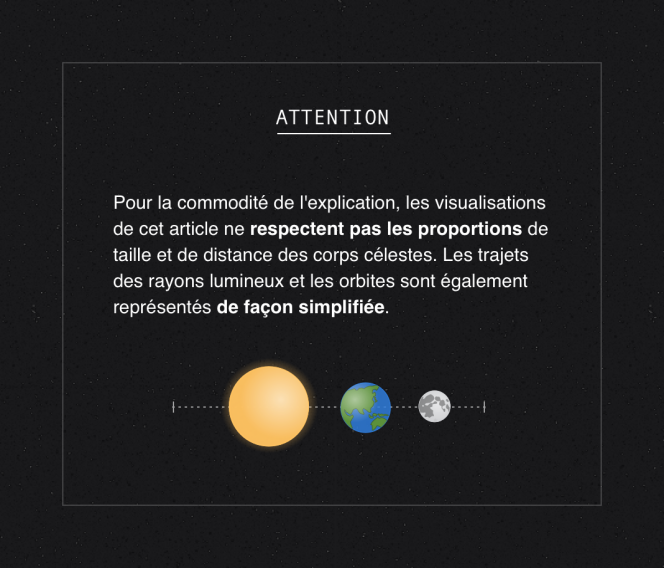
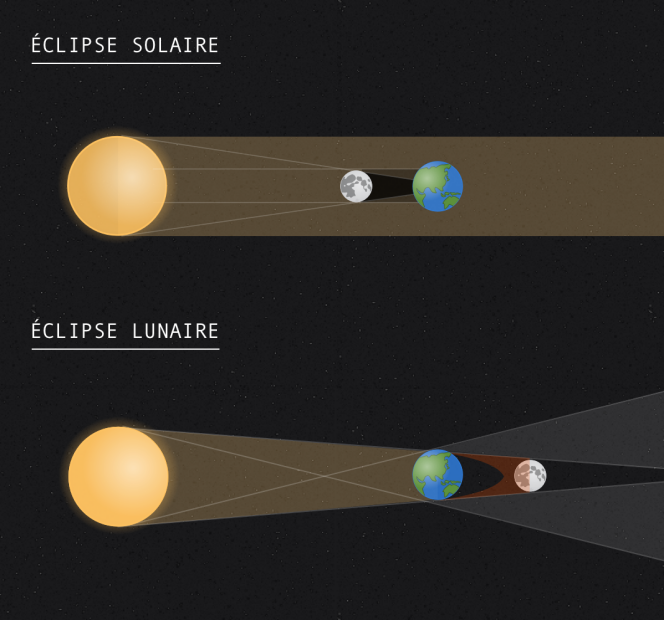
Three types of solar eclipses can be observed:
They occur when the entire solar disk is obscured by the Moon. The Moon is at exactly the right distance to appear the same size as the Sun: it is 400 times closer to Earth than the Sun, but also 400 times smaller. The moment when the Moon completely obscures the Sun is called "totality" and can last up to seven minutes.
A time during which we can observe the atmosphere of our star: the chromosphere (lower atmosphere) and the solar corona (upper atmosphere, diffused over several million kilometers). This spectacle can be observed with the naked eye without danger, unlike the moments preceding and following totality, during which the Sun's rays (especially ultraviolet and infrared) are still just as dangerous for the eyes, despite the decrease in the Sun's brightness, and can cause irreversible ocular damage. Be careful, therefore, to wear suitable protective glasses.
- Partial eclipses:
They occur when the Moon only partially obscures the Sun, passing a little too high or too low in relation to it.
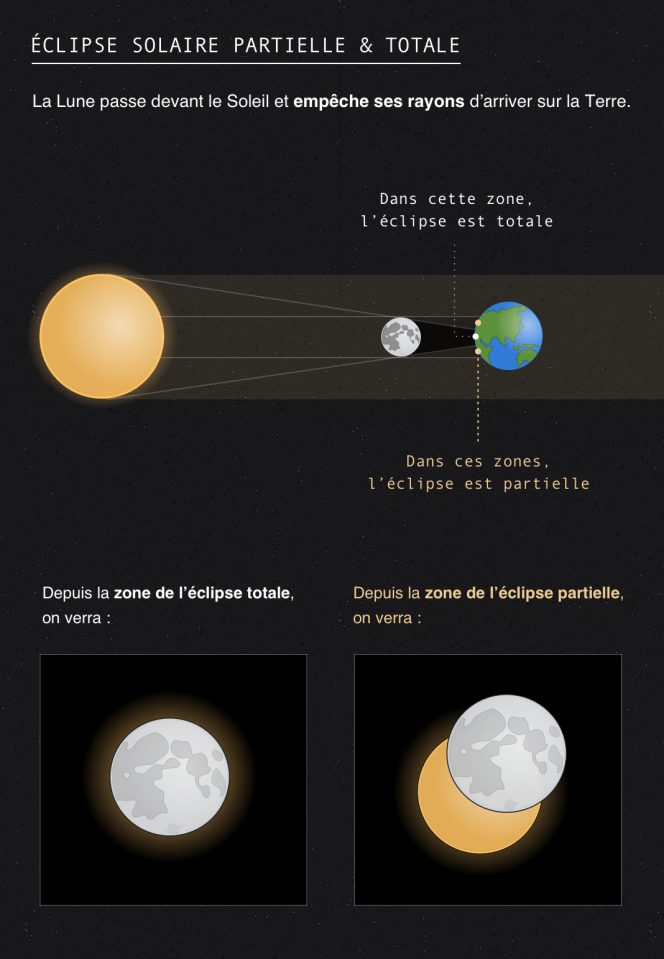
- Annular eclipses:
They occur when the Moon is too far from Earth to completely block out the Sun, leaving a ring of light around the Moon visible. They are slightly more common than total eclipses because the Moon is often a little too far from Earth.
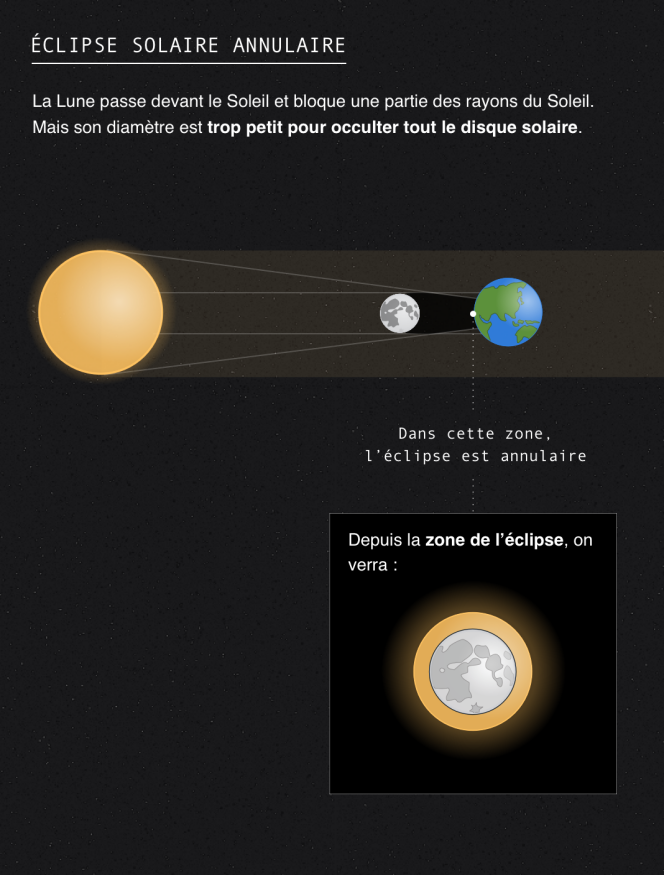
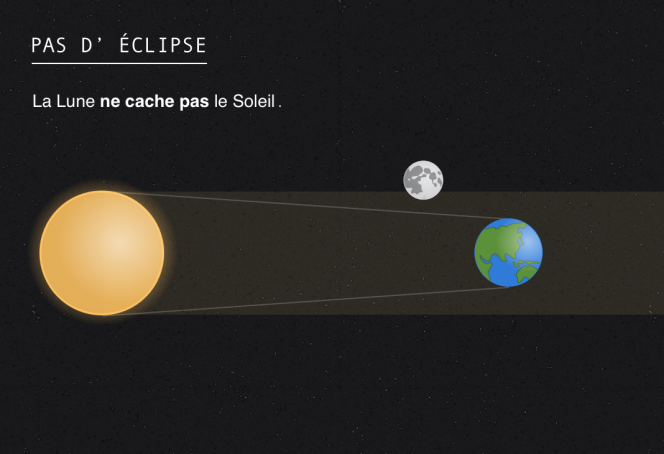
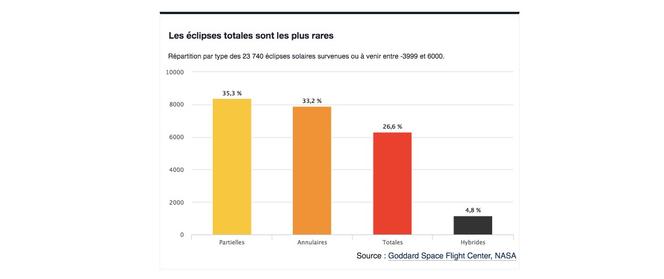
Much less well known because they are less spectacular, lunar eclipses can be much longer than solar eclipses because the Earth's shadow, into which the Moon falls, is much wider.
Since the Moon is currently close to the most distant point of its orbit (called apogee), its speed of movement in its orbit is slower, which means that on July 27, it remained in the Earth's shadow for almost one hundred and three minutes, which was predicted by astronomers' calculations, and which is not far from the theoretical maximum duration (107 minutes).

Just like its solar counterpart, the lunar eclipse can be observed in three configurations:
- penumbral eclipses: this is the least visible eclipse, since the Moon does not enter the Earth's shadow but its penumbra. In other words, it is well hidden from the Sun but not in the shadow cone. The lunar surface then darkens slightly, but not significantly;
- partial eclipses: like the partial solar eclipse, here the body of the Moon is partially masked by the shadow of the Earth and the lunar disk is partly plunged into darkness;
- Total eclipses: in this configuration, the Moon enters completely into the Earth's shadow cone and its visible surface darkens more or less. It often takes on an orange or even red tint, commonly called the "Blood Moon". This tint, specific to total lunar eclipses, is due to the sunlight passing through our atmosphere on each side of the Earth before being refracted and reaching the Moon. It is in a way the aggregate of sunsets and sunrises which occur respectively in the west and east which we then find on our natural satellite.
Since our natural satellite completes its orbit around Earth in 29.5 days, and it necessarily aligns with the Earth and the Sun during its journey, how is it that we only have two to five eclipses per year, and not two per month?





